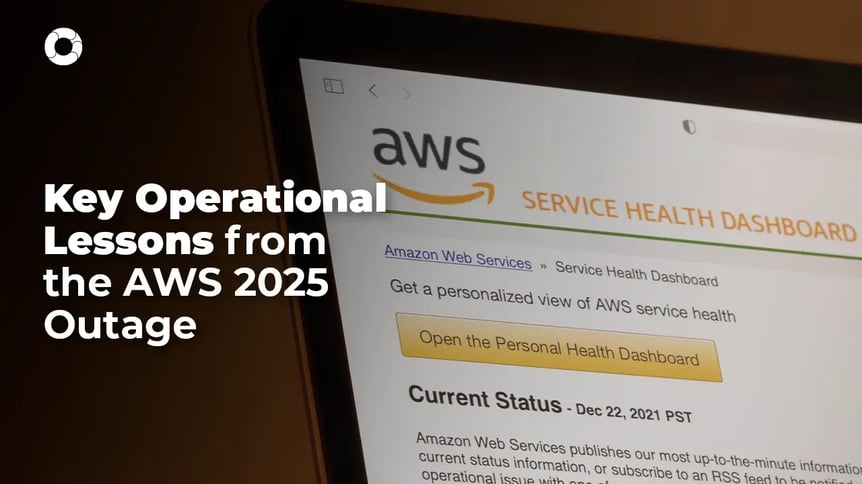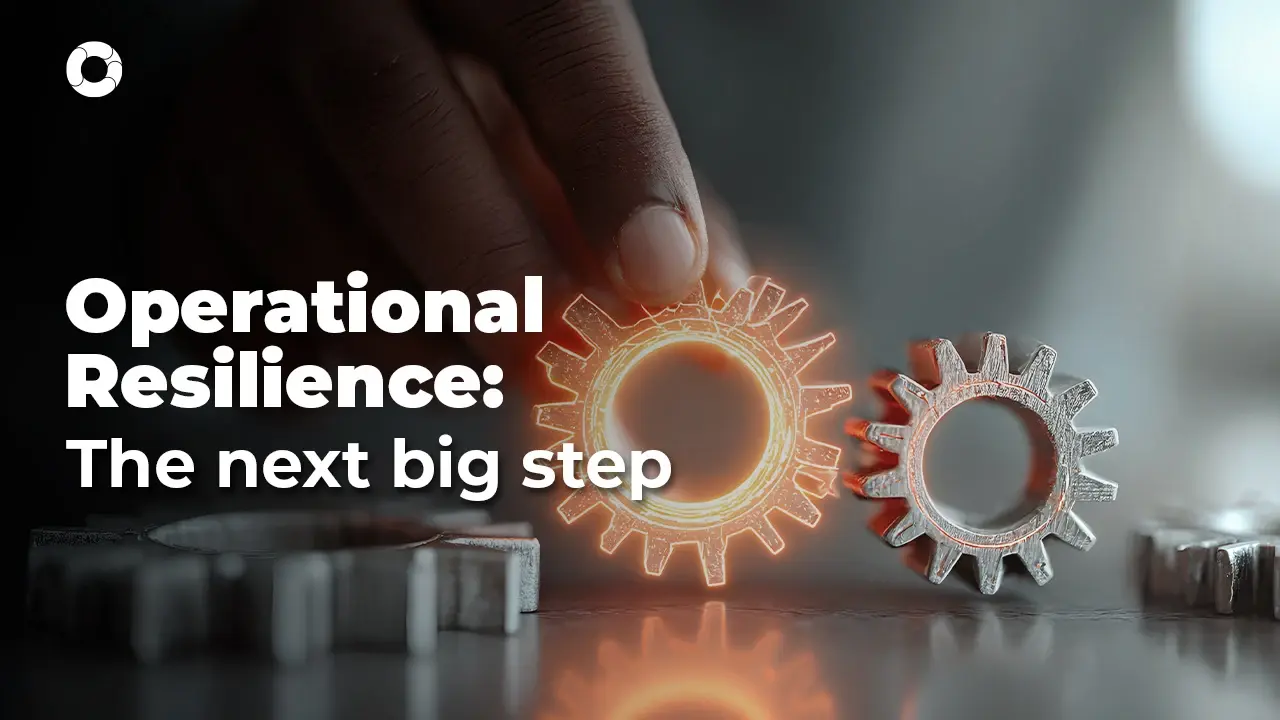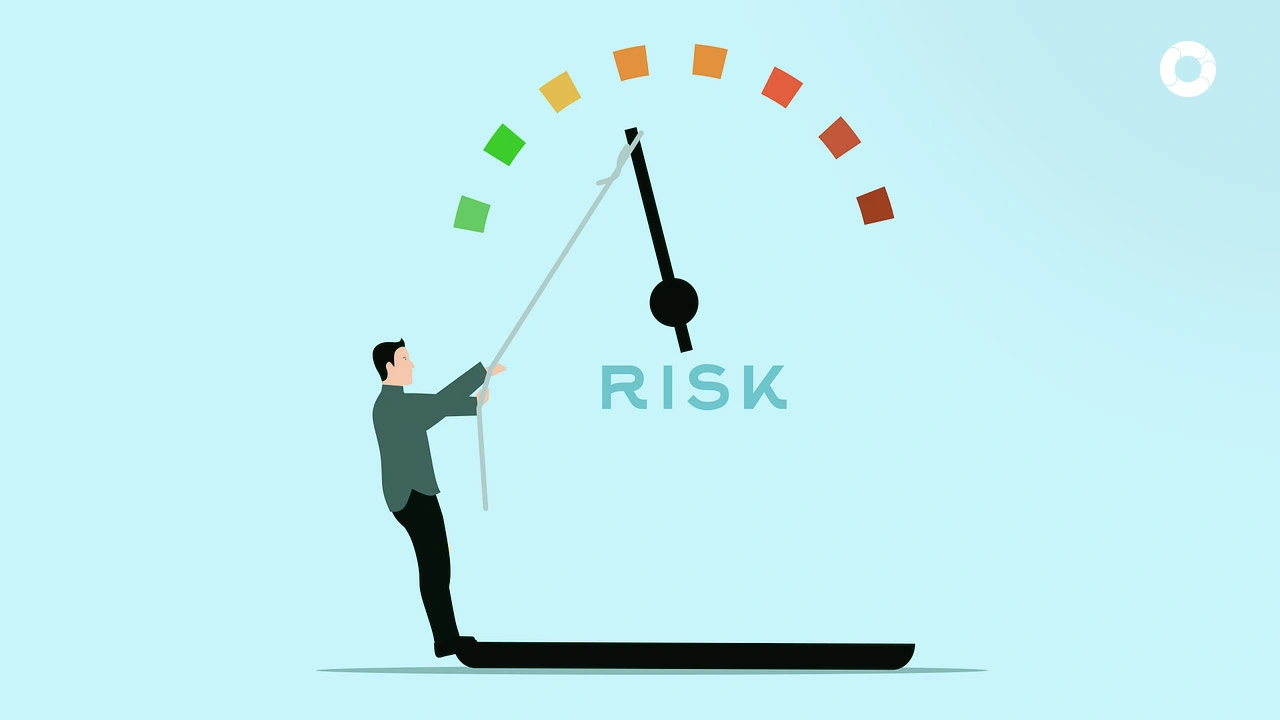Operational Lessons from the 2025 AWS Outage
On October 21, 2025, one of the world’s largest cloud providers—Amazon Web Services (AWS)—suffered a massive outage that disrupted critical systems for banks, airlines, retailers, and logistics companies across North America.
The failure, centered in the US-East-1 region, lasted for over 12 hours and triggered a cascade of operational disruptions. Major media outlets including Bloomberg and The Verge reported thousands of affected services, from digital banking apps to airline booking platforms.
For many organizations, the incident was a wake-up call: cloud dependency had quietly become one of their most material operational risks.

|
Content |
The anatomy of a systemic outage
At first glance, the AWS incident looked like a technical failure. In reality, it was a textbook case of systemic operational risk—a disruption triggered by interdependence between systems, regions, and vendors.
When a single cloud region fails, the impact propagates through:
- Shared APIs and services that create hidden points of failure.
- Insufficient inter-regional redundancy, where backup systems depend on the same provider.
- Misconfigured failover mechanisms that can’t activate automatically under pressure.
This aligns with how the Basel Committee on Banking Supervision defines operational risk: “the risk of loss resulting from inadequate or failed internal processes, people, and systems, or from external events.”
When the “system” itself becomes the failure point, resilience becomes everyone’s responsibility—not just IT’s.
When resilience depends on one provider
Following the outage, both U.S. and Canadian regulators renewed warnings about concentration risk among critical technology providers.
The Office of the Comptroller of the Currency (OCC) emphasized in its Cybersecurity and Financial System Resilience Report 2025 that firms must “identify critical operations, map interdependencies, and test recovery capabilities under realistic conditions.”
Similarly, Canada’s Office of the Superintendent of Financial Institutions (OSFI), in Guideline B-13: Technology and Cyber Risk Management, states that institutions remain accountable for operational continuity, even when services are outsourced.
Both regulators converge on the same message: outsourcing is not risk transfer. Resilience cannot be delegated.
For ORM teams, this means documenting which providers, regions, and systems support each critical operation—and testing whether those dependencies can withstand disruption.
Lessons for operational-risk teams
The AWS outage crystallized several practical lessons for ORM and resilience leaders:
- Map critical dependencies — Identify all cloud-based components supporting essential processes, including APIs and data pipelines.
- Define impact tolerances — Determine how long key services can be disrupted before causing significant harm to customers or operations.
- Test failover and recovery plans — Conduct real-world simulations; redundancy is meaningless if never tested.
- Integrate cloud risk into ORM — Treat third-party and cloud dependencies as operational-risk categories, not technical checkboxes.
- Track incidents and root causes — Use a centralized platform to log events, assign ownership, and monitor remediation progress.
As Deloitte Global observed in Operational Resilience: The Cornerstone of Modern Organizations (2025), the most resilient firms “embed resilience into every layer of their operational risk framework,” balancing efficiency with demonstrable control.
Cloud dependency as operational risk
The AWS outage also exposed a paradox: cloud computing, designed for scalability and uptime, can amplify systemic fragility when everyone relies on the same infrastructure.
From an ORM perspective, cloud dependency = vendor concentration risk + operational continuity risk. To mitigate it, organizations are adopting multi-region or multi-cloud architectures—diversifying across providers or geographic zones to reduce single points of failure.
Yet architecture alone isn’t enough. Regulators now expect firms to demonstrate that their resilience claims are backed by evidence—documented tests, incident reports, and governance structures. This expectation transforms cloud oversight into a continuous ORM process, not a one-time IT exercise.
The AWS outage of 2025 proved that cloud reliability is a collective responsibility.
Technology vendors, financial institutions, and regulators are all interconnected in the same resilience ecosystem.
For ORM professionals, the takeaway is clear: resilience starts with visibility. Organizations that can map dependencies, test tolerances, and demonstrate control will not only meet regulatory expectations—they’ll earn stakeholder trust when disruptions strike.
Next Step — Strengthen your operational resilience with Pirani
The next outage is not a matter of if, but when. Equip your organization to manage it with confidence.
Schedule a demo to discover how Pirani helps ORM teams identify cloud dependencies, document recovery testing, and build measurable operational resilience.
FAQ
- What made the 2025 AWS outage an operational-risk event, not just a technical fault?
Because a single-region disruption cascaded across critical business services (payments, booking, apps), exposing hidden interdependencies and vendor concentration—classic systemic operational risk per Basel’s definition. - How should ORM teams map cloud dependencies effectively?
Start from critical operations and work backward: list the business services, the applications/APIs behind them, the cloud regions used, and the third parties involved. Record owners, SLAs, and failover paths in your ORM system. - What do U.S. and Canadian regulators expect regarding cloud resilience?
Both OCC (U.S.) and OSFI (Canada) expect firms to identify critical operations, map interdependencies, set impact tolerances, and test recovery—and to keep evidence of those tests and outcomes. - Is multi-cloud always required?
No regulator mandates a specific architecture. What’s required is demonstrable resilience: prove that your architecture (single-cloud multi-region, or multi-cloud) meets your impact tolerances under realistic scenarios. - Which metrics matter most for proving resilience?
Define and monitor impact tolerance for each critical service, plus RTO/RPO, MTTD/MTTR, failover success rate, % of critical services with tested recovery, and closure time for post-incident actions. - How does Pirani help with cloud-related operational risk?
Pirani centralizes dependency maps, controls, SLAs, tests, incidents, and evidence. It gives traceability for auditors/supervisors and turns resilience from assumption into measurable performance. - Where can I find authoritative guidance to cite internally?
Use Basel’s Principles for Operational Resilience, OCC’s Cybersecurity & Financial System Resilience Report, and OSFI’s Guideline B-13 for North American expectations.
Try Pirani now, create your free account 👇
Want to learn more about risk management? You may be interested in this content 👇
You May Also Like
These Related Stories

Operational Resilience: The Next Frontier in Risk Management

Turning Regulatory Change into an Operational Advantage

From Checklists to Culture: Building a risk-conscious organization

How to make a risk matrix for your company

Operational Risk Management: Strategies and Examples



No Comments Yet
Let us know what you think